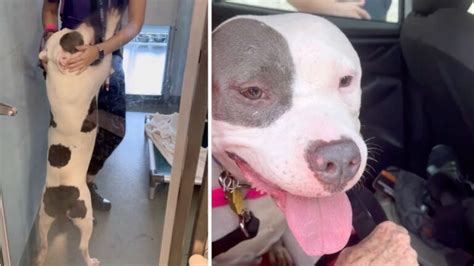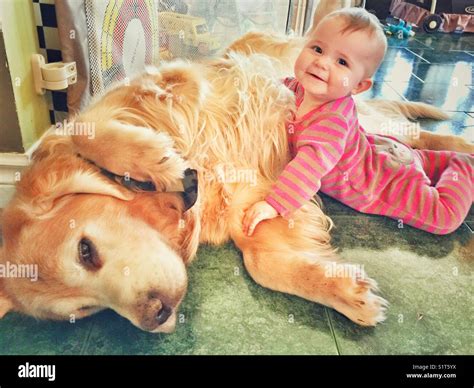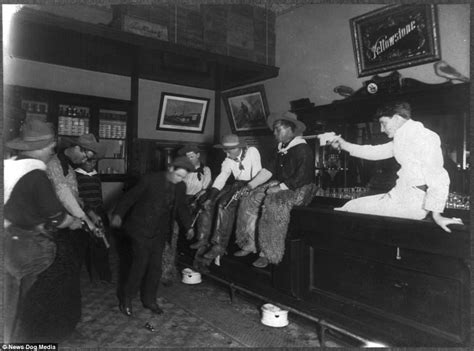
After a three-month wait, a rescue dog named Gus has finally found his forever home, and his tail hasn’t stopped wagging since he was welcomed into his new backyard.
Gus, a charming mixed-breed pup, captured the hearts of thousands online as he patiently waited at the Carson Animal Care Center in Gardena, California. His story, highlighting the often-overlooked plight of shelter animals, resonated deeply with potential adopters. After months of anticipation, Gus was finally adopted by a loving family who promise to give him the life he deserves.
The Carson Animal Care Center initially shared Gus’s story on social media, detailing his gentle nature and playful spirit. The post quickly went viral, amassing significant attention and numerous inquiries about adoption. Despite the widespread interest, finding the perfect match for Gus took time, as shelter staff meticulously screened applicants to ensure he would be placed in a suitable and nurturing environment.
“We were looking for a family that understood Gus’s needs,” explained a representative from the Carson Animal Care Center. “He is a sweet dog, but like all rescue animals, he needed a patient and understanding home.” The shelter emphasized the importance of matching pets with owners who are prepared to provide long-term care, including proper training, socialization, and veterinary attention.
Finally, after careful consideration, Gus was adopted by a local family with a spacious backyard and a clear commitment to his well-being. The moment Gus entered his new yard, his tail began wagging incessantly, a testament to his joy and relief. His new owners have reported that he is quickly adjusting to his new life, enjoying playtime, cuddles, and plenty of attention.
The success story of Gus serves as a reminder of the countless animals waiting in shelters for their forever homes. It also highlights the crucial role that animal shelters and rescue organizations play in providing care, rehabilitation, and adoption services. The Carson Animal Care Center encourages anyone considering adding a pet to their family to consider adopting from a local shelter.
“Adopting a rescue animal not only gives a deserving pet a second chance at life but also helps to alleviate overcrowding in shelters,” the representative stated. “There are so many wonderful animals like Gus waiting for their forever families.”
The heartwarming tale of Gus has inspired many to consider adoption, fostering, or volunteering at their local animal shelters. His story is a testament to the resilience of rescue animals and the transformative power of love and compassion. Gus’s journey from shelter life to backyard bliss underscores the profound impact that a loving home can have on the life of a rescued dog.
In-Depth Analysis and Background Information
The story of Gus, while seemingly simple, taps into several complex issues surrounding animal welfare, shelter overcrowding, and responsible pet ownership. Understanding these underlying factors provides a broader context for appreciating the significance of Gus’s successful adoption.
The Problem of Shelter Overcrowding:
Animal shelters across the United States, and globally, face a persistent challenge of overcrowding. This issue stems from several factors, including:
- Pet Abandonment: Economic hardship, changes in living situations, and inability to manage pet behavior often lead to pet abandonment, resulting in a surge of animals entering shelters.
- Lack of Spaying and Neutering: Uncontrolled breeding contributes significantly to the overpopulation of cats and dogs, overwhelming the capacity of shelters to provide care for all animals.
- Breeding Practices: Irresponsible breeding practices, including puppy mills and backyard breeders, exacerbate the problem by producing more animals than there are available homes.
Overcrowding in shelters has serious consequences for animal welfare. Animals may experience:
- Increased Stress: Confined spaces, noise, and limited human interaction can lead to stress, anxiety, and behavioral problems.
- Higher Risk of Disease: Close proximity to other animals increases the risk of infectious disease outbreaks, requiring extensive medical care and potentially leading to euthanasia.
- Limited Resources: Overcrowded shelters often struggle to provide adequate food, shelter, and medical attention to all animals in their care.
- Euthanasia Rates: Sadly, due to limited space and resources, many overcrowded shelters are forced to euthanize healthy and adoptable animals.
The Role of Animal Shelters and Rescue Organizations:
Animal shelters and rescue organizations play a critical role in addressing the problem of shelter overcrowding and promoting animal welfare. These organizations provide a range of services, including:
- Sheltering and Care: Providing temporary housing, food, water, and medical care for abandoned, stray, and surrendered animals.
- Adoption Services: Matching animals with suitable adoptive homes through screening processes, adoption events, and online platforms.
- Spay/Neuter Programs: Offering low-cost or free spay/neuter services to reduce pet overpopulation and prevent unwanted litters.
- Education and Outreach: Educating the public about responsible pet ownership, animal welfare issues, and the importance of adoption.
- Rehabilitation and Training: Providing behavioral rehabilitation and training programs to improve the adoptability of animals with behavioral challenges.
- Community Support: Partnering with local businesses, schools, and community organizations to raise awareness and support for animal welfare initiatives.
The Carson Animal Care Center, like many other shelters, relies on a combination of public funding, private donations, and volunteer support to carry out its mission. The center’s success in finding a loving home for Gus underscores the importance of these collaborative efforts.
The Benefits of Adopting a Rescue Animal:
Adopting a rescue animal offers numerous benefits, both for the animal and the adopter:
- Saving a Life: Adoption gives a deserving animal a second chance at life, rescuing them from potential euthanasia or a life of neglect.
- Reducing Shelter Overcrowding: Adoption helps to alleviate overcrowding in shelters, freeing up space and resources for other animals in need.
- Supporting Animal Welfare: Adoption supports the mission of animal shelters and rescue organizations, enabling them to continue providing essential services.
- Cost Savings: Adoption fees are typically lower than the cost of purchasing a pet from a breeder or pet store. Additionally, many shelters provide initial vaccinations, microchipping, and spay/neuter services as part of the adoption process.
- Known History: Many shelters provide information about an animal’s background, temperament, and medical history, allowing adopters to make informed decisions.
- Unique Personalities: Rescue animals often have unique personalities and quirks, making them special and rewarding companions.
- Unconditional Love: Rescue animals are often incredibly grateful for their second chance at life and offer unconditional love and companionship to their adopters.
- Combating Puppy Mills and Irresponsible Breeding: By adopting, individuals are not supporting puppy mills or irresponsible breeders.
Responsible Pet Ownership:
The story of Gus also highlights the importance of responsible pet ownership. Bringing a pet into one’s life is a long-term commitment that requires careful consideration and preparation. Responsible pet owners:
- Provide Proper Care: This includes providing adequate food, water, shelter, exercise, and veterinary care.
- Offer Training and Socialization: Training and socialization are essential for ensuring that pets are well-behaved and safe around other people and animals.
- Prevent Unwanted Litters: Spaying or neutering pets is crucial for preventing unwanted litters and reducing pet overpopulation.
- Supervise Pets: Pets should be supervised at all times to prevent them from getting lost, injured, or causing damage.
- Respect Community Standards: Pet owners should be aware of and comply with local leash laws, noise ordinances, and other community standards related to pet ownership.
- Plan for the Future: Pet owners should make arrangements for the care of their pets in the event of illness, travel, or death.
- Commit to the Long Term: Pet ownership is a long-term commitment, and pet owners should be prepared to provide care for their pets for their entire lives.
The Power of Social Media in Animal Rescue:
Gus’s story exemplifies the power of social media in raising awareness about animal welfare issues and facilitating adoptions. Social media platforms provide a powerful tool for:
- Sharing Animal Profiles: Shelters and rescue organizations can use social media to share photos, videos, and descriptions of animals available for adoption, reaching a wide audience of potential adopters.
- Raising Awareness: Social media can be used to raise awareness about animal welfare issues, such as shelter overcrowding, pet abandonment, and the importance of spaying/neutering.
- Facilitating Donations: Social media platforms can be used to solicit donations for animal shelters and rescue organizations, providing crucial funding for their operations.
- Connecting Volunteers: Social media can be used to recruit volunteers to assist with various tasks at animal shelters and rescue organizations.
- Educating the Public: Social media can be used to educate the public about responsible pet ownership and animal welfare issues.
The viral nature of Gus’s story demonstrates the potential of social media to connect animals in need with loving homes. However, it is also important to use social media responsibly and ethically, ensuring that animal profiles are accurate and that potential adopters are properly screened.
Expanded Context: The Broader Landscape of Animal Welfare
Gus’s story exists within the broader context of animal welfare, a multifaceted field encompassing various perspectives and concerns. Understanding these complexities provides a more nuanced understanding of the challenges and opportunities in promoting the well-being of animals.
Key Issues in Animal Welfare:
- Animal Rights vs. Animal Welfare: A central debate revolves around the distinction between animal rights and animal welfare. Animal rights advocates believe that animals have inherent rights, similar to those of humans, and should not be used for human purposes. Animal welfare advocates, on the other hand, believe that animals can be used for human purposes as long as their well-being is protected and they are treated humanely.
- Factory Farming: The intensive confinement and treatment of animals in factory farms raise serious ethical concerns about animal welfare. Critics argue that factory farming practices prioritize profit over the well-being of animals, leading to inhumane living conditions and suffering.
- Animal Testing: The use of animals in scientific research and product testing is another contentious issue. Proponents argue that animal testing is necessary for developing new medical treatments and ensuring the safety of consumer products. Opponents argue that animal testing is cruel and unnecessary, and that alternative methods should be used whenever possible.
- Entertainment Industry: The use of animals in circuses, zoos, and other forms of entertainment raises concerns about animal welfare. Critics argue that these practices often involve confinement, training methods that can be stressful or harmful, and the exploitation of animals for human amusement.
- Wildlife Conservation: Protecting endangered species and preserving natural habitats are crucial aspects of animal welfare. Habitat loss, poaching, and climate change pose significant threats to wildlife populations around the world.
Global Perspectives on Animal Welfare:
Animal welfare standards and practices vary significantly across different countries and cultures. Some countries have strong animal protection laws and regulations, while others lag behind. Cultural attitudes towards animals also play a significant role in shaping animal welfare practices.
The Future of Animal Welfare:
The future of animal welfare depends on continued efforts to raise awareness, promote responsible pet ownership, strengthen animal protection laws, and develop more humane alternatives to current practices. Technological advancements, such as precision livestock farming and in-vitro meat production, may offer potential solutions to some of the challenges facing animal welfare. Ultimately, improving animal welfare requires a collaborative effort involving individuals, organizations, governments, and businesses.
Conclusion
Gus’s heartwarming story is a microcosm of the larger narrative of animal rescue and welfare. It highlights the importance of adoption, responsible pet ownership, and the tireless work of animal shelters and rescue organizations. While Gus’s tale has a happy ending, it also serves as a reminder of the countless animals still waiting for their forever homes and the ongoing need for greater awareness and action to promote animal well-being. By understanding the underlying issues and supporting organizations dedicated to animal welfare, individuals can make a positive impact on the lives of animals like Gus and contribute to a more compassionate world.
Frequently Asked Questions (FAQ)
-
What breed is Gus?
- The article does not specify Gus’s exact breed, only referring to him as a mixed-breed pup. Shelters often provide DNA testing or breed estimations, but this information was not included in the source article.
-
Where is the Carson Animal Care Center located?
- The Carson Animal Care Center is located in Gardena, California.
-
How long was Gus at the shelter before being adopted?
- Gus waited for three months at the Carson Animal Care Center before finding his forever home.
-
What made Gus’s story go viral?
- Gus’s story went viral due to his gentle nature, playful spirit, and the universal appeal of a rescue dog patiently waiting for a loving home. The emotional connection resonated with many people online.
-
How can I adopt a dog from the Carson Animal Care Center?
- Individuals interested in adopting from the Carson Animal Care Center can visit their website or social media pages for information on available dogs and the adoption process. The article mentions the shelter uses a screening process to ensure suitable homes for their animals. It’s advisable to contact the shelter directly for the most up-to-date procedures and requirements.









